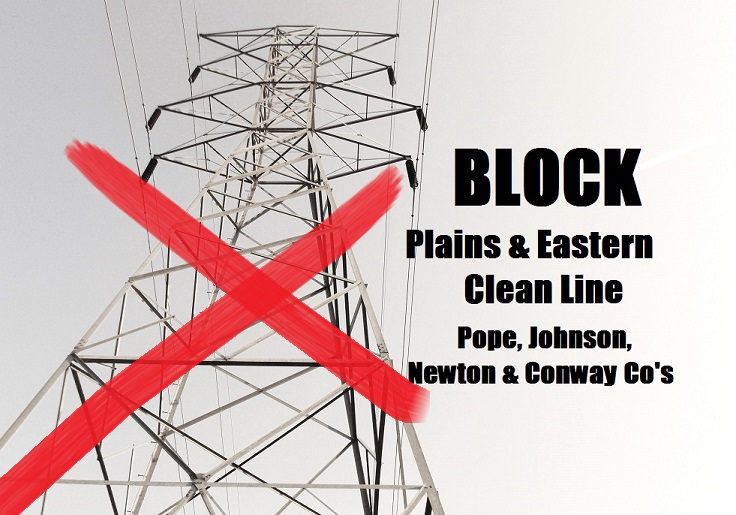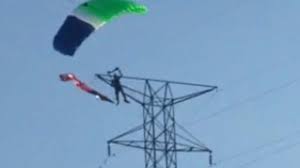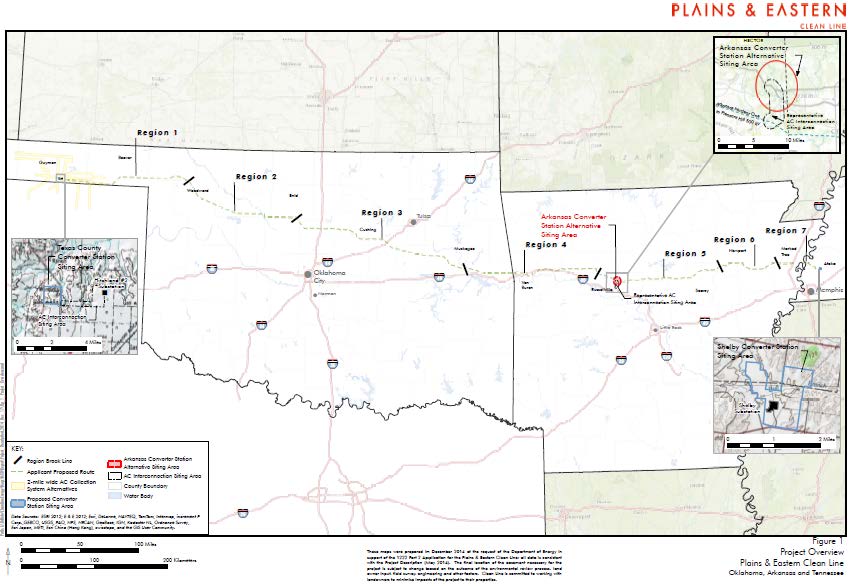FERC accepts BLOCK Plains & Eastern Petition for Rulemaking
June 23rd, 2015
YEAAAAAA!
When filing BLOCK Plains & Eastern Clean Line: Arkansas and Oklahoma’s Petition for Rulemaking, because it doesn’t have a docket number, it’s not an existing docket, it must be filed, and then FERC staff decides whether to accept it, the next step in deciding what to do with it. Our Petition for Rulemaking has been accepted! Now they will have to decide what they’ll do with it!
Here’s the FERC Notice:
Acceptance for Filing ——————— The FERC Office of the Secretary has accepted the following electronic submission for filing (Acceptance for filing does not constitute approval of any application or self-certifying notice):
Accession No.: 201506165371
Docket(s) No.: RM15-22-000
Filed By: BLOCK Plains & Eastern Clean Line: Arkansas and Oklahoma -Signed By: Carol Overland F
Filing Type: Utility Accounting Request(??)
Filing Desc: Petition for Rulemaking of Regulations for Filing Applications and Review of Transmission Line Projects under Section 1222 of the Energy Policy Act of 2005 of BLOCK Plains & Eastern Clean Line under RM15-22.
Submission Date/Time: 6/16/2015 2:25:40 PM
Filed Date: 6/16/2015 2:25:40 PM
Your submission is now part of the record for the above Docket(s) and available in FERC’s eLibrary system at: http://elibrary.ferc.gov/idmws/file_list.asp?accession_num=20150616-5371
If you would like to receive e-mail notification when additional documents are added to the above docket(s), you can eSubscribe by docket at: https://ferconline.ferc.gov/eSubscription.aspx
Here are the filings (each was advised of the other Petition for Rulemaking so everyone knows):
Note we also filed a Petition for Rulemaking with the DOE’s Office of General Counsel. Let them argue between themselves and figure out just who is going to do it and when and get it MOVING FORWARD! Rulemaking is long overdue, and FYI, DOE, you have no business making any decision, doing any review, without rules.
Senators and Representatives stand up for the people!
June 9th, 2015
WOW! Hot off the press, U.S. Senators John Boozman and Tom Cotton from Arkansas, Senator Lamar Alexander from Tennessee, and U.S. Representatives Rick Crawford, French Hill, Steve Womack, and Bruce Westerman have all signed on to a letter to Secretary of Energy Ernest Moniz to extend the comment period on the Plains & Eastern Clean Line Transmission Project.
And here’s their press release:
Federal Lawmakers Request More Time for Comment Period on Plains & Eastern Clean Line Transmission Project
In their press release, they make it easy for all of you to send your request too… so just do it!
Written comments should be addressed as follows: U.S. Department of Energy, Office of Electricity Delivery and Energy Reliability (OE-20), 1222 Program, 1000 Independence Avenue SW., Washington, DC 20585. Electronic comments can be emailed to plainsandeastern@hq.doe.gov. [and also send to the DOE assigned staff person, Angela.Colamaria@hq.doe.gov] The Department will make comments available as they are received. Additional information from the Department is available at http://energy.gov/oe/downloads/plains-eastern-clean-line-transmission-line-part-2-application
Please take a few minutes and send them a hearty THANK YOU!!!
Senator Boozman (AR) Contact Page
Senator Cotton (AR) Contact Page
And in the Arkansas News:
BLOCK Plains & Eastern Clean Line docket filings
June 8th, 2015
QUICK — take a few seconds and send a missive to BOTH plainsandeastern@hq.doe.gov AND Angela.Colamaria@hq.doe.gov and ask for 1) an extension of time to file comments, at least to September 11, 2015; and 2) public hearings across the affected area, as they did for the DEIS.
++++++++++++++++++++++++++++++
Hot off the press, here are the BLOCK Plains & Eastern Clean Line: Arkansas and Oklahoma Initial Filings to the DOE’s Office of Electricity Delivery and Energy Reliability in the Plains & Eastern Clean Line docket:
And to add a little frosting on the cake:
Meanwhile, Clean Line is putting its efforts into ASTROTURF!!! You’d think they’d have a clue how that goes over.
And here’s the Citizens First Congress Champions for Change luncheon, where BLOCK Plains & Eastern Clean Line: Arkansas and Oklahoma’s Alison Milsaps spoke to the crowd:
From the “WHAT THE HELL WERE THEY THINKING” file…
May 25th, 2015
.
The miracle was he was brought to the hospital, treated, and released. WHEW!

Who would hold an event with fly-ins of any type next to a big honkin’ transmission line?
From Scripps Channel 5 News
Skydiver Treated, Released From Hospital After Hitting Powerlines
And another version:
And in the Winchester Herald Chronicle:
Skydiver lines jolts Memorial Day event landing in power
Posted on Monday, May 25, 2015 at 9:27 am
STAFF WRITER courtney stachel
A skydiver drifting into a power line from a wind gust Saturday at the Red, White and You Memorial Day event in Winchester was followed by a happy ending when word was given that he had been treated and released from the hospital.
More than 400 spectators witnessed the incident when skydiver John Pitts, of the Fly It Like You Stole It skydiving team, was the first of three divers to exit an airplane and came down toward the ground gracefully while the National Anthem was being played.
A wind gust hit Pitts, causing him to drift into the electrical lines where he was left hanging for less than a minute. He dropped from the lines and fell onto a rocky area next to Tims Ford Lake.
Zachary Colescott, Winchester Municipal Airport manager, said right after the fall that Pitts was conscious and being airlifted.
Colescott said the team was concerned about the wind flow the day of the event.
“That was one thing we were worried about was the wind — being so close to the water and the power lines,” he said. “I’m really glad he is okay.”
Despite the scary interruption to the show, acclaimed country singer Lee Greenwood went on to perform as scheduled.
The event lasted all day and held plenty of entertainment for spectators, including the traveling Vietnam memorial wall, musical entertainment and a boat parade.
Jayson Davis, Moore-Cortner Funeral Home family services counselor, said the outcome at the event was surprising.
“There were a lot more people who came out than we expected,” he said. “I’m proud that so many people came out to enjoy the day with us.”
Greenwood was the main attraction. He spoke from the heart in a talking to the Herald Chronicle about small town U.S.A. and how he was looking forward to coming to Winchester and preforming.
“I love the small town flavor as it reminds me how I grew up in California,” he said. “Little towns are becoming big towns, and big towns are becoming big cities. Somewhere in the transition, we are losing the face of America. Winchester, Tennessee, is a reminder of all that is good with the United States.”
For Greenwood, Memorial Day provided the perfect opportunity to spread his message of patriotism.
“Memorial Day is not just about the good food, drinks and fireworks, which thrills the crowds — it’s about remembering those who have sacrificed through the years to give us that chance,” he said. “There are memorials all across the nation that bear witness to the struggle America has had in gaining and maintain our independence. It’s that thought I reflect on when I sing and when we observe this holiday.”
Plains & Eastern UnClean Line non-NEPA process begins!
April 27th, 2015
The long awaited moment has arrived — the substantive review by DOE of the Plains & Eastern UnClean Line is now public. Remember, there are NO RULES, this is uncharted territory, they’ve not done anything like this before!
There’s a lot of stuff here — this is cut and pasted from the DOE SITE, and downloading will take a while:
Plains & Eastern Clean Line Transmission Line – Part 2 Application





